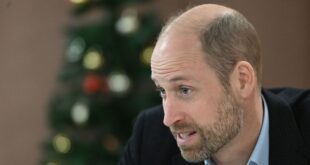By Ted Pearson
On Saturday May 6, there will be a global moment when millions across the planet will witness the coronation of Britain’s King Charles III on televisions, laptops, and phones.
In London, thousands will gather, lining the streets along which the monarch and his consort will be drawn by eight horses in a three–ton, air-conditioned Diamond Jubilee State Coach to Westminster Abbey. A couple of hours later, the newly crowned king will clamber aboard another carriage and return to Buckingham Palace.
But the coronation will not bring the country to a complete standstill.
Just as Charles and Camilla head home in the early afternoon, Tottenham Hotspur will be warming up for their match against Crystal Palace just a few miles north from the revelries in Central London.
And, if a recent opinion poll is to be believed, more than 60% of the population plan on spending the day doing something other than watching the coronation. So, for the nation’s dogs, it could be a banner day for retrieving sticks, chasing balls, and catching frisbees.
The weeks leading up to the coronation has been a time for the British to consider whether, in the second decade of the second millennium, the monarchy is an institution whose shelf life has long expired.
In the months after Queen Elizabeth’s death, people wrote much and said much about this subject around the kitchen table, in the pub, in newspaper columns, and on radio and television programs.
The conversations have ranged from serious and thoughtful to the frothy–gossip columnists on the guest list (will Megan and Harry be on the Palace balcony?), foodies opining about the taste and texture of Coronation Quiche (the dish concocted to mark the occasion), artists discussing the design of the official invitation as well as on the huge array of souvenirs that range from commemorative plates, mugs, T-shirts, cake stands and coins, picnic hampers (one with a coronation Paddington Bear and a jar of whiskey–laced marmalade), and garden gnomes.
In many cases, these commentaries offer a critical appraisal of both monarch and monarchy, particularly as the coronation is taking place against a backdrop of a society in crisis, struggling to come to grips with the calamitous consequences of Brexit and the pandemic.
In power for the last 13 years, the Conservative government lurches from crisis to crisis, from scandal to scandal, with ministers as well as prime ministers coming and going with alarming regularity.
The economy remains stuck firmly in second gear, supermarket shelves are often empty, and inflation is running at about 10%. Underfunded and understaffed, the National Health Service and other public services have been close to collapse for the last decade, with strikes by nurses, teachers, transport workers and others once again part of daily life.
With the social and economic fabric fraying so badly, it is little wonder that Charles and the institution that he heads have become targets. With the cost of the coronation estimated at as much at $125 million, it is little wonder that the public is openly questioning the wisdom of the whole enterprise.
Furthermore, revelations in The Guardian about Charles’ personal fortune, reckoned to be around $1.6 billion along with an enormous portfolio of palaces, country estates, and fleets of luxury cars has only added fuel to a debate that has grown increasingly contentious in the last few weeks.
Calling on Britons to pledge allegiance to his royal personage, Charles has, in the words of a retired schoolteacher, “shot himself in the foot.”
This event has led many Britons to consider their past. Recalling my primary school days, which began in 1963 (the year, notes poet Philip Larkin, “of the Beatles’ first LP”), history classes consisted primarily of learning about two institutions: the monarchy and the Church of England.
The Queen – or, at least, her image – was a constant presence in daily life: her face was on the money and postage stamps, the royal crest adorned telephone boxes and much else besides, the Royal Mail delivered our letters, convicted criminals served their sentences at “Her Majesty’s Pleasure,” we sang “God Save the Queen” at every school event, and she was constantly on the “telly,” opening a hospital, heading off on yet another royal tour, greeting dignitaries for a state dinner or, in 2012, filming a sketch with 007.
But her presence also reminded everyone that we lived in a hierarchical society, with the Queen at the apex of the social order.
And for her 70 years on the throne, Elizabeth, no matter how integral she was to the nation’s DNA, was emblematic of a society where people knew their place. Now, with her passing, it is perhaps time for a change; neither Charles nor the monarchy enjoy the same hold over the national imagination as did Elizabeth in her prime.
Two-and-a-half centuries ago, this country had a problem with the monarchy, breaking off its close relationship to the British crown.
Not only were the colonies ruled from London, the governor acting as the king’s representative, but most colonists warmly embraced the crown, celebrating George III’s coronation in 1761 along with royal births and birthdays with great fanfare.
This relationship grew increasingly turbulent after the Seven Years’ War, its deterioration well illustrated by the fate of a statue.
Grateful for the king’s efforts at getting the universally hated Stamp Act repealed in 1766, New Yorkers commissioned an equestrian statue of George III cast from two tons of lead.
Dedicated in March 1770, it stood in a park at the southern end of Manhattan Island, but in July 1776, just days after the signing of the Declaration of Independence, a crowd gathered on Bowling Green, armed with ropes and crowbars, and tore the statue from its pedestal.
Having metaphorically “killed the king,” the crowd then shipped the statue to a foundry in Litchfield, Conn. Melted down, it provided enough lead to cast thousands of musket balls.
The war in which Continental soldiers used this ammunition would end with the American victory at Yorktown in 1781, forcing King George III to lament that “America is lost!” and, a few years later, the inauguration of a new form of government that did not involve kings, queens, princes, and titled aristocrats looking like extras in a Gilbert and Sullivan operetta.
At the end of the day, no matter how deep our cynicism about modern–day politics and politicians, a head of state who represents a government “of the people, by the people, for the people” doesn’t seem like such a bad idea.
That the head of the British state is someone who presides over an institution dedicated to upholding a status quo that no longer meets the needs of the vast majority of his subjects, itself a word that speaks volumes about the current arrangement, surely needs to be overhauled, if not abolished.
Ted Pearson, a former British native and now an American citizen, is an associate professor of history at Franklin & Marshall College in Lancaster, Pa.
Source link



